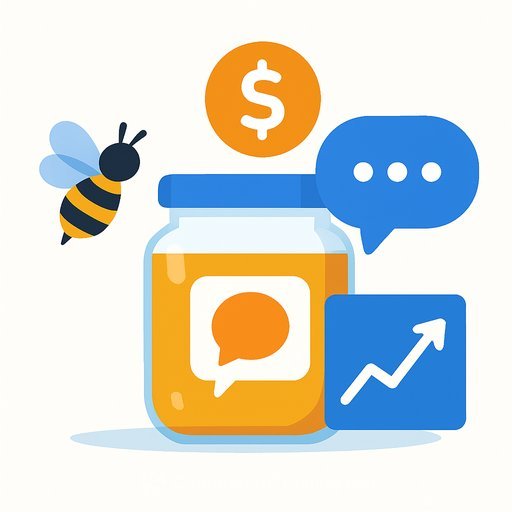What to Do When Clients Ask: "Can We Use ChatGPT for This?"
A client sends a press release that looks clean. You ask who wrote it. They say, "ChatGPT did most of it." The draft reads fine, but reporters pass. It's missing specificity, proof and a reason to care right now.
This moment is common. According to Muck Rack's 2025 State of AI in PR, most PR teams now use generative AI and say it speeds up work, yet many still lack a policy. Clients see the speed and assume the work is solved. It isn't-unless you bring the strategy.
Muck Rack: State of AI in PR 2025
The PR-Client Shift (And How to Stay Essential)
- Set the record straight on quality. AI drafts sound generic, over-polished and light on sourcing. Reporters want fresh angles, real data and human quotes. Your job is turning information into news.
- Protect your value (and your budget). Reframe PR as strategy, narrative design and media relationships-not typing faster. Tools write. Pros position, time and sell the story.
- Spot AI "tells." Repetitive sentence structures, sweeping claims with no citations and what many call "AI workslop." Use detectors if you want, but your judgment is the filter. If you need one, try Originality.ai.
- Talk outcomes, not ownership. If a draft feels AI-heavy, stay neutral. Ask how it was created, then pivot: "AI can speed first drafts. To earn coverage, we still need a sharp why-now, proof and a credible voice."
- Add AI rules to your SOW. Define if client AI drafts are acceptable, who owns fact-checking and how revisions are billed. Set expectations for disclosure, data handling and final approval.
- Offer AI editing + fact-checking as a service. Don't fight the tool-productize the human layer. You make it accurate, sourced and media-ready.
- Use the time you save for higher-value work. Thought leadership, reporter mapping, exclusives, data storytelling, briefing docs and relationship-building.
- Own the narrative. AI isn't going away. Pros who integrate it with clear standards and a strategic POV keep the trust and the budget.
How to Answer: "Can We Use ChatGPT for This?"
Don't say yes or no. Show where it fits.
- Good use: First drafts of releases, bylines or FAQs from a solid brief. Summaries of research. Message variations for A/B tests.
- Human steps you keep: Sharpen the angle, add "why now," source the claims, add quotes and proof, align to outlet and reporter, and stress-test the narrative.
- Script you can use: "Yes, we can use ChatGPT for a starting draft. Then I'll add context, proof and timing so it meets what journalists actually run."
A Simple PR + AI Workflow That Works
- Brief: Business goal, audience, reporter targets, why-now, non-negotiable proof points, quotes, and approvals.
- Draft: Use ChatGPT, Claude or Gemini for a structured first pass-nothing more.
- Humanize: Replace generic claims with real numbers, customer stories, product specifics and leadership POV.
- Verify: Fact-check, add citations and links, remove fluff, tighten headlines and subject lines.
- Pitch: Customize for the reporter. Offer data, assets, availability and clear next steps (embargo, exclusive, demo).
AI "Tells" Checklist
- Language: Over-smooth tone, repeated phrasing, clichés, and filler transitions.
- Claims: Big statements without sourcing or dates. Vague metrics ("increase," "significant").
- Details: Missing names, timelines, customer quotes or proprietary data.
- Structure: Each paragraph same length and cadence; reads like a template.
SOW Clauses You Can Plug In
- Acceptable AI Use: "Client and Agency may use AI for ideation and first drafts. Final content requires human review and approval by Agency."
- Fact-Checking Ownership: "Agency is responsible for final fact-checking and sourcing. Time spent correcting AI-generated inaccuracies is billable."
- Disclosure & Data: "No confidential data will be entered into public AI tools. Any AI use will meet client security guidelines and legal requirements."
- Attribution: "Agency is not required to disclose tool names unless legally necessary; accountability rests with the final approver."
What Reporters Still Need (And AI Can't Fake)
- Why now: Tie to a trend, regulation, milestone or dataset.
- Proof: Numbers, customers, pilots, screenshots, patents, benchmarks.
- Human voice: Founder POV, operator quotes, customer outcomes.
- Access: Briefings, exclusives, demos, embargo plans.
Metrics That Keep You Paid
- Inputs: Reporter shortlists by beat, custom pitches sent, response rate, briefing acceptances.
- Outputs: Quality coverage, message pull-through, backlinks, share of voice and assisted pipeline where relevant.
- Efficiency: Draft cycle times and revision counts drop while quality signals rise.
When To Push Back
- Heavily regulated claims with legal risk and no source data.
- Executive bylines that must reflect a personal voice and experiences.
- Crisis statements where tone, accountability and precision matter more than speed.
Turn AI Into Your Advantage
Yes, use ChatGPT for speed. But sell the part clients can't replace: the angle, the proof and the relationship that gets a yes. That's the difference between "polished" and published.
If you want structured upskilling for PR teams using AI responsibly, explore curated options here: AI courses by job and ChatGPT resources.
Your membership also unlocks:






